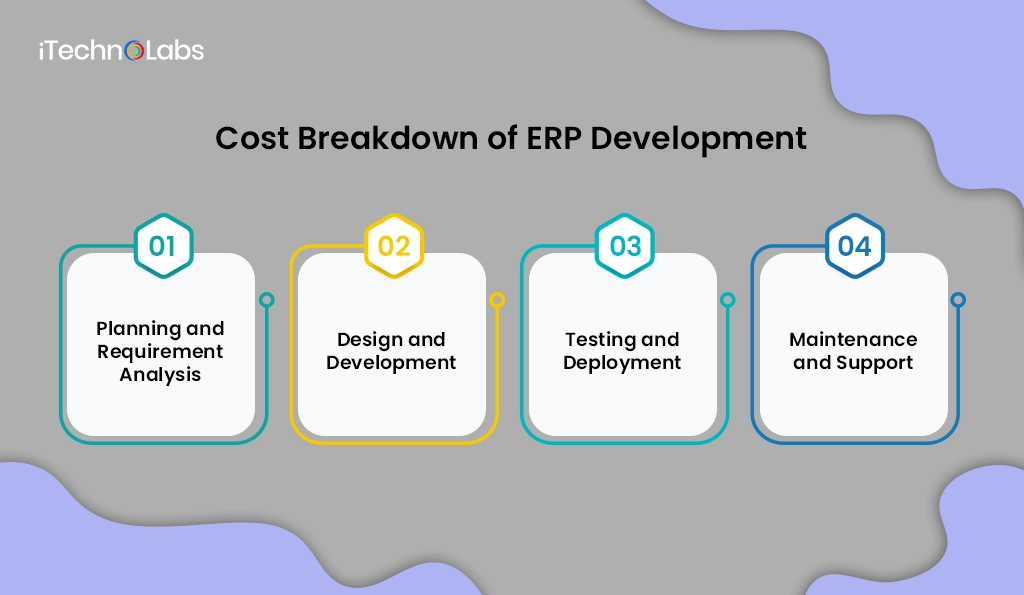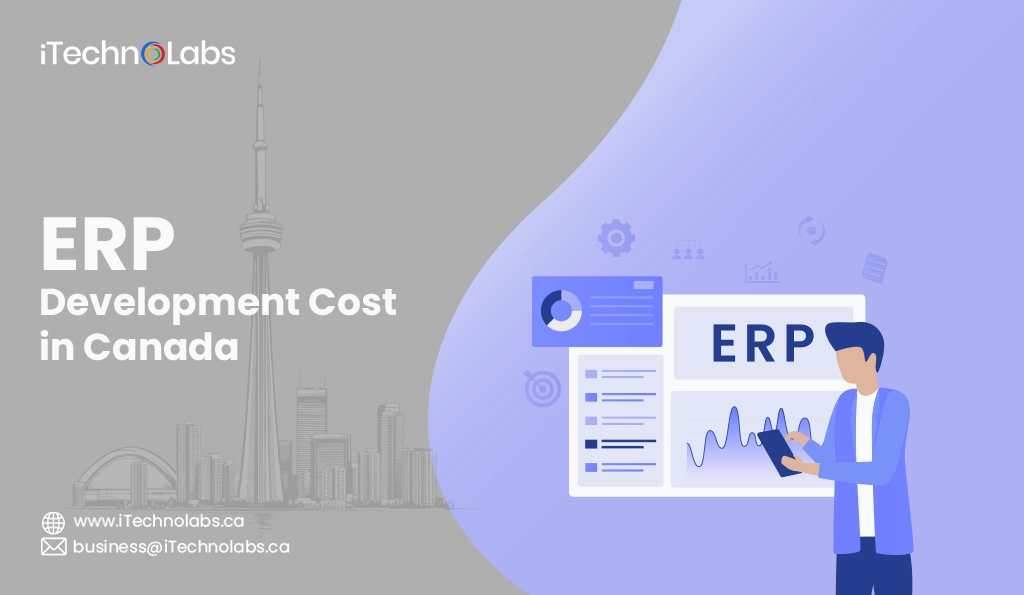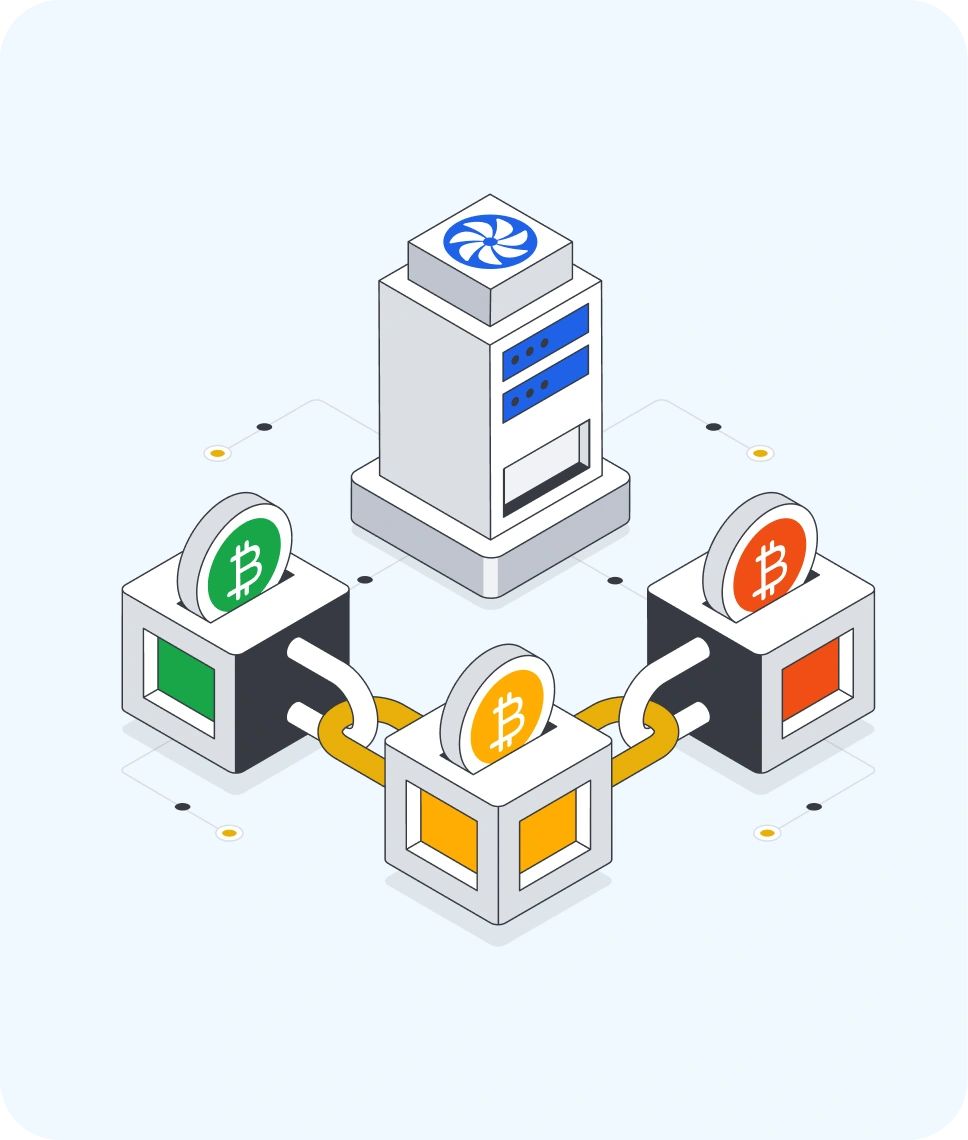To more efficiently enhance today’s business performance and processes, along with decision-making, ERPs are the latest, most embraced lifeblood for virtually every organization. Whether a small startup or large enterprise, Canadian businesses are increasingly investing in ERP systems to stay competitive. In addition, the most asked business owner’s question will be, “How much does ERP development cost in Canada?”
Development costs of ERP can vary depending on a wide array of factors, including scope, complexity, and customization. Successful ERP development requires strategic thinking, extensive planning, and properly thought-out expense accountability. This guide opens with a look at the major factors affecting the ERP development cost in Canada, includes a detailed cost breakdown, and concludes with some cost-minimizing tips so quality isn’t compromised.
Factors Affecting ERP Development Cost in Canada
The cost of developing an ERP system in Canada depends on many important factors. Understanding these factors can effectively help you in your budget and make informed decisions.
1. Scope and Complexity of the Project
The comprehensive cost of the project is greatly influenced by the size and complexity of the project. An elementary type of ERP system will cost less to develop than an advanced one. It’s a system with full options adapted for AI insights, predictive analytics, multi-platform integration, etc. The more complex the system, the more time and resources need to be spent on development.
With professional ERP development services in Canada, businesses can choose the right level of customization and features that match their specific needs while ensuring optimal use of resources and budget.
For example, a small business might be looking for an ERP to manage payroll and inventory but would be able to spend much less than, say, an enterprise tracking operations across multiple locations and providing automated reporting and analytics in real time.
2. Customization and Integration Requirements
One important thing to note is that it is very rare to find an ERP solution that will fit just perfectly with any business. When we are talking about individualized business processes and system integration with the existing ones (for instance, CRM, Payroll, and Inventory), the money we spend on the development will increase the cost.
Customization involves changing the core architecture of software and adding new features, which requires more growth time and effective resources. The same requires integration with existing platforms and further coding and testing to ensure spontaneous data exchange and functionality. More customization and integration are required; the higher the total cost of experiencing ERP development services in Canada, the more help is needed to manage effectively.
3. Number of Users and Licenses
The most significant aspect is the number of individuals who will interface with the ERP system, as they impact the licensing and infrastructure necessary for their use. ERP vendors are commonly sold by the user or via a tier-based structure based on the number of users.
For instance, for a small business with ten employees, the cost will be significantly lower than for a big corporation having hundreds of concurrent users on the system. If different access levels are required for users in different roles, more elaborate permission settings and user management features will have to be purchased, which may raise costs even further.
4. Cloud-Based vs. On-Premise ERP
The choice between a cloud-based and an on-premise ERP system also influences the overall cost.
- Cloud-Based ERP: The original capital spread for cloud-based solutions is low because there is no investment in the infrastructure. However, it requires the ongoing membership fee, which can compound over time. The cloud-based ERP system is very easy to scale and has external access, making it a good alternative for growing businesses.
- On-Premise ERP: On-premises; thus, ERP systems need higher initial investments for the hardware, installation, and configuration. On the other hand, after the installation, the follow-up costs afterward are lower than cloud-based solutions. Even though the upfront cost is higher, on-premise ERP systems have high data security and customized infrastructural features, which push business firms to prefer them.
5. Development Time and Resources
The duration of an ERP system design will directly determine the development cost. This also means more extended development time and larger development teams will invariably amount to higher costs. A highly complex ERP system requiring extensive customization, testing, and multi-platform support would take even longer to build. Establishing efficient project management and good communication among stakeholders is vital for budget control of development time, especially when working with an experienced ERP development company in Canada to ensure timely delivery and cost efficiency.
Cost Breakdown of ERP Development

To help you understand how ERP development costs in Canada are distributed, here’s a detailed breakdown of each phase:
1. Planning and Requirement Analysis
The planning phase involves understanding business requirements, defining project goals, and developing a roadmap. In this phase, it is important to work with important stakeholders to secure the ERP system to ensure that both business needs and long-term purposes are really met.
- Estimated Cost: CAD 5,000 – CAD 15,000
2. Design and Development
This phase sees the first pieces of actual coding and development work. UI/UX design takes center stage here, ensuring the system is nice, user-friendly, and simply intuitive. Backend and frontend development are those responsibilities connected to building the core architecture and integrating all modules that one may need. Customization based on business needs also occurs here, and engaging professional ERP development services in Canada at this stage ensures the solution is tailored effectively to meet organizational goals.
- Estimated Cost: CAD 20,000 – CAD 100,000+
3. Testing and Deployment
Testing represents such a vital phase in which the performance, security, and functionality of the system are inspected. Bugs or issues are fixed and adjusted for before final release and deployment. This involves getting the live-based system and operation as smooth as can be.
- Estimated Cost: CAD 5,000 – CAD 20,000
4. Maintenance and Support
As long as the system is up and running, these will ensure maintenance throughout the life of the ERP. Maintenance includes updating, which is bug fixing, and technical support to users throughout the use of the system. Regular maintenance costs are applied.
- Estimated Cost: CAD 2,000 – CAD 10,000 per year
Also, read: Is LAMP Stack Outdated?
Average ERP Development Cost in Canada
ERP development cost can vary depending on the size of your business and the complexity of the system:
| Business Size | Average Cost Range | Key Features Included |
| Small Business | CAD 20,000 – CAD 50,000 | Basic modules (HR, finance, inventory) |
| Medium Business | CAD 50,000–CAD 150,000 | Advanced modules, integrations, and reporting |
| Enterprise-Level | CAD 150,000 – CAD 500,000+ | Full customization, AI capabilities, multi-platform support |
Hidden Costs to Consider
1. Data Migration
Transferring existing business data from legacy systems to a new ERP system can be complex and time-consuming. The complexity of the data structure and the volume of data directly influence the cost.
- Estimated Cost: CAD 5,000 – CAD 20,000
2. Training and User Adoption
Training employees to use the new system is critical for successful adoption. A well-trained workforce ensures higher efficiency and faster ROI. The cost depends on the complexity of the system and the number of employees involved.
- Estimated Cost: CAD 3,000 – CAD 10,000
3. Ongoing Maintenance and Upgrades
Regular updates and security patches are necessary to keep the system secure and functioning correctly. Costs will depend on the type of maintenance contract and the complexity of the system.
- Estimated Cost: CAD 2,000 – CAD 10,000 annually
How to Minimize ERP Development Cost in Canada
It is believed that investing in an ERP system is expensive, but there are techniques to conserve cost without compromising the quality and functionality of the system. It is good to properly plan and adopt methods to contain expenses and additional returns on investment. Here are some effective ways to cut costs when it comes to ERP development:
1. Choose the Right ERP Platform
While choosing an ERP platform, one has to consider the business requirements and operational needs normally, which helps a lot in the cost. The right platform would cut down on huge customization and unnecessary features that otherwise would have inflated development time and costs.
- Open-Source Platforms: Open-source ERP platforms, such as Odoo and ERPNext, are an excellent and inexpensive alternative to their proprietary counterparts. These platforms majorly come with the standard ERP functionalities at no licensing fee, hence allowing a business to modify and scale the system as needed. The silver lining here, however, is that open source could be a lot more difficult in terms of the effort required to be put in and the skill requirements to customize, an area where expert ERP Development Services in Canada can provide the technical expertise needed for seamless implementation.
- Industry-Specific Solutions: ERP players on this dot often craft solutions customized for specific industries, with configurations made to modules based on certain business models. Selecting a customized solution would cut down on development time as well as the requirements for customization, hence faster deployments and cost savings.
2. Work with an Experienced Development Team
One of the best ways to keep a cap on costs while ensuring a smooth development process is by collaborating with an experienced ERP development team. Expert developers offer experience-based insights, which, when put to good use, may help you steer clear of a number of very costly mistakes and save countless hours in development time.
- Faster development cycles: Because they are familiar with the common challenges associated with ERP development, as well as know the available best practices, they can develop and deploy ERP systems with a higher degree of efficiency. A team with experience can foresee the likely issues that would come up in the run of a project and include them in their plan so that they can deal with such issues beforehand.
- Customization efficiency: This is where an experienced set of developers really helps in homing in on the right way to customize the ERP system without much of complexity to add on. It is here that skilled developers probably will suggest using existing modules or third-party integrations as opposed to building custom features from scratch, thus saving both time and money.
- Quality assurance/testing: Likewise, professional development teams tend to test the ERP system for bugs and security vulnerabilities before deployment. During the pre-production phase, there is an early identification of problems, which allows them to be solved beforehand and not build important costs at production time with system downtime.
- Scalable solution: You can count on your development partner of choice to build the ERP right from the start in a way that it is easy to scale up when your need arises. Wise investment planning also reduces future costs due to growth in your business.
3. Adopt a Phased Implementation Approach
An alternative to rolling out a complete ERP system in a big-bang mode would be a phased implementation that will ease the burden of upfront costs and subsequently improve overall efficiency. With a stepwise rollout, firms can assess the performance of the system and make necessary changes to allocate the resources better. Working with an experienced ERP Development Company in Canada can help businesses plan and execute such phased implementations strategically for optimal results.
- Start with Core Modules: This entails coming up with the essential modules that support the most critical business operations for your finance, inventory, or human resources as a means of addressing immediate business needs in such a way as to minimize development costs.
- Evaluate and Optimize: After you’ve deployed the first phase, investigate how the system performs. Gather user feedback, pinpoint any problems or inefficiencies, and correct the system before expanding to other modules. This minimizes the risk of problems that could arise from large-scale failures and result in expensive redoing of work.
- Gradual Expansion: As the core modules begin to integrate properly into your business, additional features and integrations could be added, such as their CRM, supply chain management, and advanced reporting modules. This will further distribute general costs while organically allowing the system to grow.
- Minimization of Disruption: The nature of a phased approach means that a small number of changes at a time make it very low-key about suspended day-to-day business activities, ensuring somehow a smoother transition with a higher level of adopting users.
4. Leverage Pre-Built Modules and Third-Party Integrations
A deliberate model-building from the ground is cumbersome and expensive. Development costs can be lowered when building up by customizing or assembling modules and integrating from other parties to fulfill specific functions.
- Pre-Built Modules: Most ERP platforms have come up with generic prebuilt application modules whereby they will find practical applications in the fields of finance, payroll, and inventory management. The use of standardized modules reduces both the development time and costs, as they require only minimum customization by being adapted to fit into your specific business processes.
- Third-Party Integrations: Another approach is to add existing third-party solutions instead of making a whole custom one from scratch. For example, several integrations include the bandage for payment, sales for CRM, or QuickBooks for accounting, all saving development time and costs.
- API and Middleware Solutions: Like modern computing tools, ERP systems ensure that through APIs, a combination of other apps can be connected without the high intensity of coding. Middleware solutions bridge different systems, enabling the free flow of data while lessening the amount of heavy coding imposed on programmers.
5. Focus on User Training and Change Management
While training or user adoption is easily overlooked in the ERP implementation process, poor user engagement can lead to operational inefficiencies and increased costs. Investing in user training and change management ensures that employees are equipped to make the most out of the ERP system, with a positive knock-on effect on business outcomes. Partnering with a reputable ERP development company in Canada can further ensure that both the technical and human aspects of implementation are handled effectively for maximum ROI.
- Role-Based Training: Tailor training programs according to the roles and responsibilities of the employees. This ensures that the users focus on the features and functions most relevant to their daily work
- Hands-On Workshops: Setting up hands-on workshops where employees test the system in a controlled environment. This builds confidence and lessens the resistance towards change.
- Ongoing Support: Establish a support system to address user concerns and troubleshoot issues after deployment. Quick resolution of problems minimizes downtime and improves overall user satisfaction.
- Feedback and Iteration: Encourage employees to provide feedback on the system’s performance and usability. Use this feedback to refine and improve the system in future updates.
Suggested Article: Claude AI Pricing
Conclusion
A wealth of funds is required for the creation of the program of enterprise resource planning. But for being certain of getting the expected outcomes, the right developers and allocating the required time to make a comprehensive plan has to be the key factor. The ERP development cost in Canada can range from one company to another based on the project complexity, customization requirements, deployment model, and the number of users. Despite the high initial cost, a good ERP device can be the vehicle of great returns through the improvement in business efficiency, the simplification of workings, and thus better decision-making happenings.
Furthermore, when it decides to invest in an ERP solution, many would not think about internal processes; they would rather center their vision on gaining a competitive edge in the market. An adequately integrated ERP improves transparency, increases productivity, decreases operational costs, and allows data-driven decision-making. With iTechnolabs, you will get more than just an ERP system but a strategic partner committed to your business success, making your ERP development cost in Canada a high-value investment. As a trusted ERP development company in Canada, we ensure your solution is designed to deliver long-term growth and efficiency.









